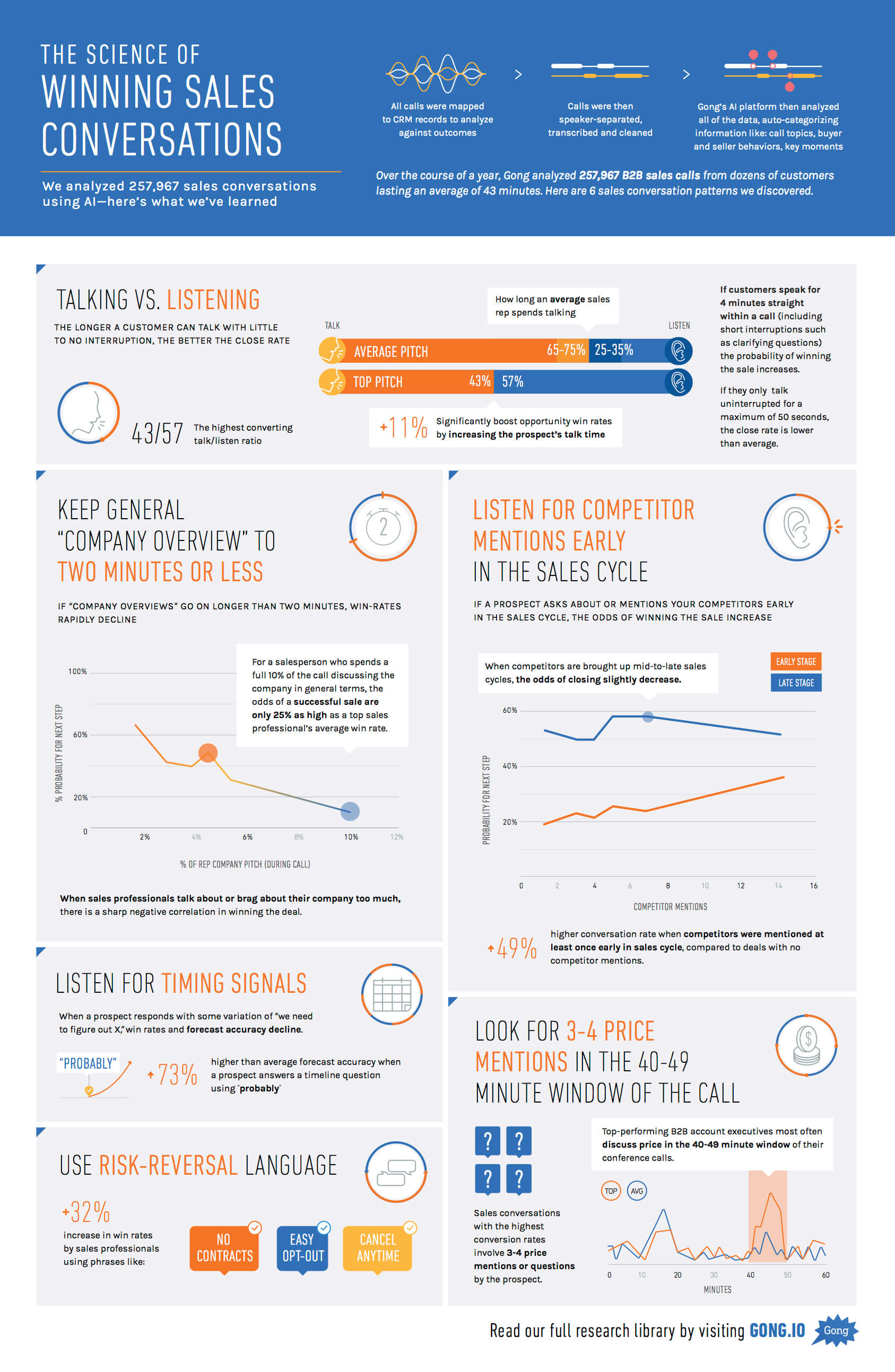Words can literally change your brain. Every word and phrase uttered during a sales conversation will either increase or decrease your odds of winning the deal. This is why sales conversations are still the most effective means of moving buyers through the buyer’s journey.
But they’re also an act of guesswork. Yes, we all like to think we know what works and what doesn’t in sales. But for the most part, we have no data to back up our theories.
So, we decided to take some of the guesswork out of what makes a winning B2B sales conversation.[Tweet “Successful Sales Calls Have These Six Elements [Infographic]”]
The data science team at Gong.io analyzed over 250,000 B2B sales call recordings with their self-learning conversation analytics engine to identify the patterns and trends of the most successful sales calls of the bunch.
All calls were recorded, speaker separated, transcribed from speech to text, and analyzed with machine learning algorithms to identify key behaviors (of both buyer and seller).
Here’s what we found, summed up in an infographic:
Infographic created by gong.io .
The key points:
- Talking vs. Listening: The sales conversations that lead to the most closed business average a 43:57 talk-to-listen ratio. It also turns out that the longer you can get your customer talking for an uninterrupted streak, the better your odds of closing the deal.
- Keep the “About Us” to a Minimum: Many sales professionals start their sales cycles with an “about us”-style first call deck. It turns out, if you spend more than 2 minutes discussing your company in this way, there is a sharp drop off in your probability of winning the deal.
- Competitor Mentions: Did your prospect ask about one of your competitors? That could be good or bad, depending on the stage of the sales cycle. If they asked about your competitor early in the sales cycle, you have a better chance of winning the deal than if they weren’t brought up at all. But, if it happens late in the game, be warned.
- Linguistic Cues for Timing: Prospects use specific words and phrases that signal when they plan on moving forward. Try asking the prospect their timeline for purchase. If you hear the word “probably” in their response, your odds just went up (as in “probably in Q4”).
- Risk-Reversal Language: When sales professionals liberally use “risk-reversal language” to soothe their buyers’ pre-purchase anxiety, their win-rates bump up 32% on average.
- “Talking Price”: The highest performing B2B salespeople don’t talk about price until late in the call (the 40-49 minute window of scheduled sales calls). It also turns out that 3-4 pricing mentions by the prospect correlates with the highest win-rates. More than four and less than three, and win-rates begin to shrink.
If this piqued your interest, be sure to check out more of our conversation analytics research.



